Catalogue > Faire une recherche
Résultats pour : Tout le catalogue


Paulius Anicas
Charming Habits
Fiction expérimentale | 4k | couleur | 20:20 | Lituanie | 2022
Poet at work: daydreams, nightmares and writings.
Paulius Ani?as, born in Vilnius, Lithuania. Graduated contemporary sculpture BA in Vilnius Academy of Arts.
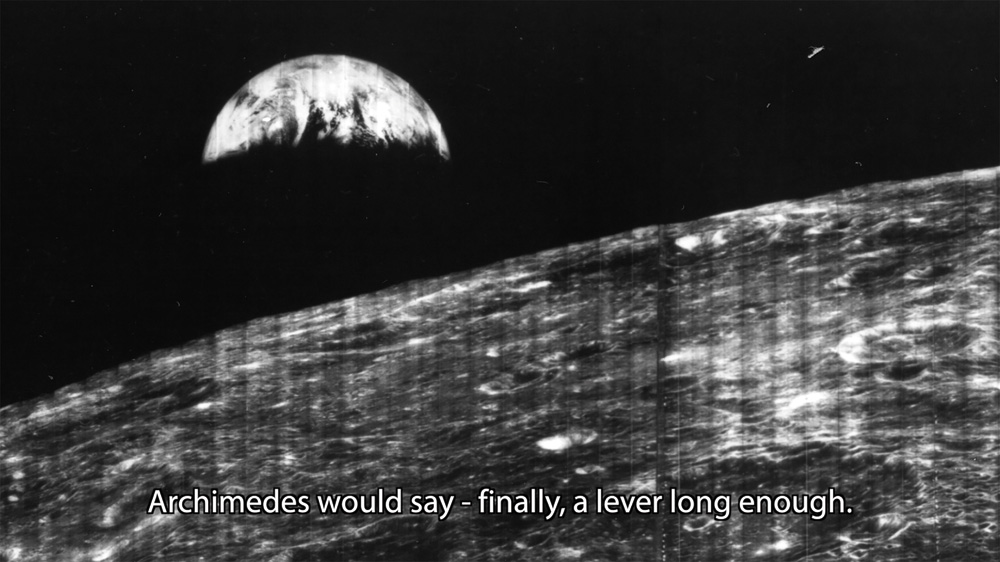
Alex Anikina
Ostrannenie
Film expérimental | hdv | couleur | 8:13 | Russie, Royaume-Uni | 2015
Ostrannenie is a video-exploration of a territory and of the language belonging to it. It traces a history of imaginary lands from the times when the Earth rested on elephants’ backs to the current moment of Google Maps and glossy stock footage. The map of the world in the video becomes a field where the history of geographical discoveries is intertwined with the histories of the human imagination, with the camera’s eye and the gaps in language.
Alex Anikina is an artist-researcher who currently lives and works in London, working primarily with texts, language-based works, experimental films and objects. Her artistic and academic practices both revolve around the exploration of human relationship with technology and knowledge through experimental film. Her works are held in the collection of National Centre for Contemporary Arts, Moscow. Participated in VI Moscow Biennale of Contemporary Art and IV Moscow International Biennale for Young Art. Presented a paper and a video installation at DRHA 2014 at Greenwich University. Received Best Experimental Short award at the London Independent Film Festival (2014). Screenings include Open Eyes Filmfest Marburg, VideoJam at Salford, MAGIKALCHARM Experimental Video Festival (2014 and 2015) at Anthology Film Archives, New York, Athens International Film and Video Festival, FLEXfest, 10th Cologne International Videoart Festival, AOF International Film Festival, Berlin DLX festival.
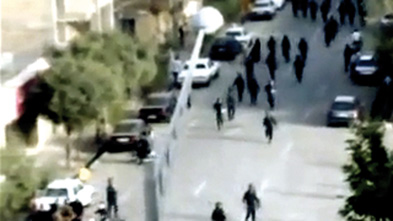
Anonyme Anonyme
Fragments d'une révolution
Documentaire | dv | couleur | 55:0 | France | 2010
Iran, 12 juin 2009. Dénonçant une « fraude massive » aux élections présidentielles, des centaines de milliers d?Iraniens descendent dans la rue pour exprimer leur mécontentement. Alors que les journalistes locaux ont été muselés et les journalistes étrangers expulsés du pays, ces affrontements violents ont été visibles dans le monde entier grâce aux images amateurs filmées par des manifestants anonymes.
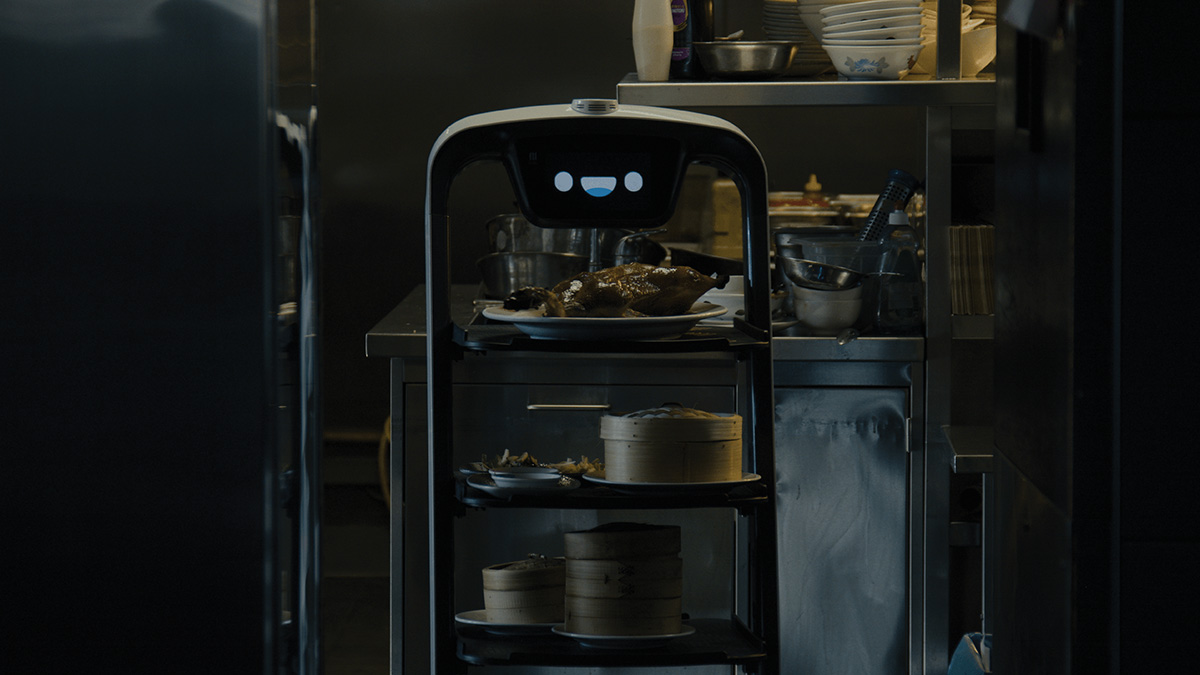

Misho Antadze, -
Metabolism
Doc. expérimental | 4k | couleur | 12:0 | Georgie, Pays-Bas | 2023
Robots work on a dairy farm. They milk the cows, clean their dung, and massage them. Meanwhile, human beings are absent. In a restaurant, robot waiters bus food back-and-forth, ignored completely by their human colleagues. An engineer revives an old robotic arm for his children. With a curious, observational gaze, Metabolism looks at technology, animals, and labor.
Misho Antadze is a filmmaker and artistic researcher from Tbilisi, Georgia, born in 1993 He holds a BFA in Film/Video from CalArts and an MA in Artistic Research through Cinema from the Netherlands Film Academy. As a practitioner and researcher, his interests include the meeting and departure points of cinema and history, as well as animal and non-human perspectives. His works have screened at International Film Festival Rotterdam, Ann Arbor Film Festival, DocLisboa and Full Frame Film Festival, amongst many others. The Harvest was awarded at Jeonju International Film Festival and at Palic European Film Festival and was screened online on e-Flux.


Ziad Antar
Safe sound
Vidéo expérimentale | dv | couleur | 9:0 | Liban, France | 2006
Safe Sound de Ziad Antar, RT: 8 mins. Comme le siége continua et l'assaut ne s'arrêta pas, la routine quotidienne se suspend et le temps reste immobile. Quand quelqu'un n'est pas immédiatement exposé au danger, survivre devient une question de gérer la captivité ressentie et de faire passer le temps.
Filmmaker?s Biography: Ziad Antar lives and works between Lebanon and France. He graduated with a degree in agricultural engineering in 2001, and has been working in photography and video since 2002. His videos include Safe Sound (2006), Marche Turque (2007) and Mdardara (2007). He directed his first documentary Jean-Luc Moulène in 2002.


Ziad Antar
WA
Vidéo expérimentale | dv | couleur | 2:30 | Liban, France | 2004
Deux enfants jouent du synthétiseur et créent leur propre chanson.
Né à Saida, Liban en 1978. Vit à Paris. Travaille dans les domaines de la vidéo et de la photographie depuis 2002. diplôme comme ingénieur en agriculture en 2001 à Beirut. Il expose une année au Palais de Tokyo en 2003, Le Pavillon.
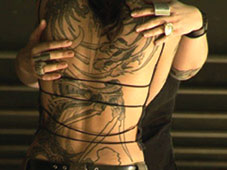

Emmanuelle Antille
A Place We Call Home
Fiction expérimentale | dv | couleur | 8:0 | Suisse | 2006
A Place We Call Home nous entraîne au c?ur des relations intenses et particulières qui unissent deux personnages féminins. Le décor qui les entoure, à la fois urbain et sauvage, physiquement mangé par la végétation, absorbe et réfléchit leurs rituels.
Emmanuelle Antille est née en 1972 à Lausanne où elle demeure et travaille. Elle étudie à l'Ecole supérieure d'art visuel de Genève de 1991 à 1996, puis, de 1997 à 1998, à la Rijksacademie à Amsterdam. Elle use d'un langage parfois minimal parfois emphatique. Elle ausculte le dedans et le dehors et se voit de l'intérieur et de l'extérieur. Cette discipline de l'analyse systématique permet à tout un chacun de faire l'épreuve à son tour de son soi. Ses ?uvres ont été exposées notamment lors de festivals de vidéo comme ceux de Zurich, New York, Le Caire, Vilnius, Salamanque. En 2005 elle présentait « Rollow » au festival de Locarno et obtenait le prix Jeune créateur de la fondation vaudoise pour la promotion et la création artistique.
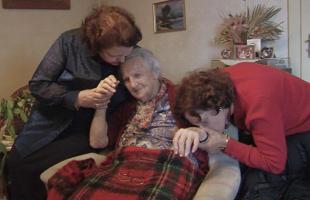

Emmanuelle Antille, -
Barricata
Fiction expérimentale | dv | couleur | 19:52 | Suisse | 2007
Barricata est une vidéo en trois actes se jouant autour de quatre personnages féminins : la grand-mère, ses deux filles et sa petite fille. Axée sur le thème de l?abandon (de soi, des autres, de ses biens, de son corps ou de sa mémoire), cette vidéo présente les relations intimes entre les membres d?une même famille. Dans le premier acte, les quatre femmes, cloîtrées dans la cuisine, attendent et guettent l?arrivée de deux inconnus. Ceux-ci pénètrent dans la maison, l?inspectent, barricadent la pièce principale, puis repartent aussi soudainement qu?ils sont apparus. Dans le deuxième acte, les quatre femmes sortent de leur isolement et reprennent possession des lieux. Elles effectuent de petits rituels intimes et obsessionnels, ensemble ou séparément. Ces rituels leur permettent d?établir une tension avec leur environnement, de reprendre le contrôle ou de lâcher prise. Ainsi, ces femmes rejouent et réinventent les relations qui les unissent, jusqu?à l?hallucination parfois. Dans le troisième acte, les deux inconnus reviennent. Les femmes sont alors prêtes à les rencontrer, prêtes à leur livrer une part de leur histoire. Ils se retrouvent alors tous ensemble dans le salon barricadé.
Emmanuelle Antille Née à Lausanne en 1972. Vit et travaille à Lausanne. 1997-1998 Rijksakademie van Beeldende Kunsten, Amsterdam 1991-1996 Ecole Supérieure d`Art Visuel, Genève Expositions personnelles (sélection) : 2008 Family Viewing, Centre PasquArt, Bienne Editing Room / Editing Territories, Art Unlimited, Bâle 2007 Barricata, Salle Noire, Musée d?Art Moderne de la Ville de Paris/ARC, Paris Inner Streams, COMA, Berlin Skull Shaker, Galleria Roberto Giustini, Rome 2006 Le Journal de Jack, Galerie Eva Presenhuber, Zürich Angels Camp, Simon Fraser University Gallery, Vancouver. Kill me twice, dear friend, dear enemy, Nichido Contemporary Art, Tokyo Tornadoes of my Heart, Tokyo Wonder Site, Tokyo Cures & Comas, Marc Hostettler, Neuchâtel 2005 Kill me twice, dear friend, dear enemy, Art Unlimited, Bâle Centre pour l?image contemporaine Saint Gervais, Genève 2004 Angels and Landscapes, Galerie Akinci, Amsterdam Angels Camp ? First Songs, CCA, Glasgow Angels Camp ? Radiant Spirits, Sammlung Goetz, Münich Angels Camp ? First Songs, Site Gallery, Sheffield Night For Day, Centro Atlantico de Arte Modernao, Las Palmas Gran Canaria 2003 Angels Camp, The Renaissance Society, Chicago NB, Kunsthaus Baselland, Muttenz Angels Camp, Pavillon Suisse, 50ème Biennale de Venise, Venise Expositions collectives (sélection) : 2008 Shifting Identities, Kunsthaus Zürich Identity, Nichido Contemporary Art, Tokyo You Are My Mirror 1: L?Infamille, Frac Lorraine, Metz about: safety scaffold, :emyt, Berlin SUPERNATURAL, Kunsthalle Andratx, Mallorca Accrochage, Musée des Beaux-Arts, Lausanne La Durée, National Islandic Gallery, Reykjavik 2007 Global Feminisms, Brooklyn Art Museum, New York Dark Mirror, Montevideo Time Based Arts, Amsterdam Global Feminisms, Davis Art Museum / Wellesley, Wellesley Art en Plein Air Môtiers 2007, Môtiers Love Addiction, Galleria Comunale d?Arte Contemporanea di Monfalcone, Monfalcone Video Salon, Galerija 10 m2, Sarajevo Dadada, Hammam de Mostar, Sarajevo Videoskulptur 07, Baden Surréalités, Centre PasquArt Kunsthaus, Bienne Outre-Tombe, Galerie 1m3, Lausanne Monumenta, projection d?Angels Camp, Grand-Palais, Paris Résidents, Espace Electra, Paris Jubliee Exhibition, House Eva Presenhuber, Vnà Triennale de l?imprimé contemporain, Musée des Beaux-Arts, Le Locle 2006 Nouvelles Collections, Centre PasquArt, Bienne Frictions, Espace des arts plastiques, Saint-Dié-des-Vosges Visioni del Paradiso, Institut Suisse de Rome, Rome 1ère Biennale du Havre, Le Havre Eldorado, MUDAM, Luxembourg WoMA. Women Making Art, André Schlechtriem Temporary Inc., New York 2005 Fast Forward, Media Art, Goetz Collection, Conde Duque, Madrid Madonna ? Express yourself, Kunsthaus Dresden Swiss Made (The Art of Falling Apart), Cobra Museum, Amstelveen Refleksija, Nizhnij Novgorod, National Center for Contemporary Arts, Moscou The Parable Show, Grimm/Rosenfeld gallery, Münich Croiser des mondes, Musée du Jeu de Paume, Paris Goetz meets Flackenberg, Phoenix Art, Hamburg T 142, Gallery Deweer, Ottegem At The Launderette, Lausanne Desire, Para/Site Art Space, Hong Kong Frictions, Fonds régional d?art contemporain de Lorraine, Metz Alias & Alibi, Fries Museum, Leeuwarden Festivals vidéos (sélection) / Projections : 2008 PointLignePlan 10 ans, Centre Pompidou, Paris La Blanchisserie, Paris Rencontres Internationales Paris/Berlin/Madrid, Musée National Reina Sofia, Madrid 2007 KunstFilm Biennale, Köln/Bonn Rencontres Internationales Paris/Berlin/Madrid, Berlin 2006 Festival du Film de Trieste, Trieste Festival du Film de Locarno, Locarno Swiss Video, Tate Modern, Londres 2005 Compétition video, Festival du Film de Locarno Prix : 2005 Prix en Arts Visuels de la Fondation Vaudoise pour la Culture 2003 Résidence de la Mairie de Paris au Couvent des Récollets, Paris 2001 Prix Fédéral des Beaux-Arts Prix Kiefer-Hablitzel Atelier Suisse à Berlin 2000 Prix Fédéral des Beaux-Arts Prix Kiefer-Hablitzel 1999 ConcoursFédéral des Beaux-Arts Review + film contest, Migros Culture 1996 Fonds Cantonal de Décoration et d`Art Visuel de Genève


Emmanuelle Antille
Even if we fall
Fiction | dv | couleur | 9:21 | Suisse | 2007
"Even if we fall" aborde la question des relations au sein d'une famille et des rôles joués par chacun de ses membres. Dans une maison silencieuse, un père, une mère et leur fille sont assis dans le salon, immobiles et silencieux. La mère prend soudainement sa fille par la main, et ils quittent tous les trois la pièce pour aller s'isoler dans la chambre des parents. Ils vont y exécuter un rituel unique : la fille a décidé d'offrir ses cheveux à sa mère. Le film montre la relation forte qui unit la fille à ses deux parents, et le lien très particulier qui existe entre les parents et pose une nouvelle fois la question de l'amour et du sacrifice au sein de la cellule familiale .
Emmanuelle Antille est née en 1972 à Lausanne. Elle a étudié à l?Ecole Supérieure d?art visuel de Genève, et à la Rijksakademie à Amsterdam. Ses oeuvres ont notamment été présentées à Attitudes, Genève ; au Fridericianum Museum, Kassel ; au centre d?art contemporain de Vilnius (Lituanie) ; à Imago 02, Salamanque ; à la Renaissance Society, Chicago ; au Pavillon Suisse de la 50ème Biennale de Venise ; au CCA de Glasgow ; au Centro Atlantico de Arte Modernao, Las Palmas Gran Canaria ; au Centre pour l'image contemporaine Saint Gervais, Genève ; au Nichido Contemporary Art, Tokyo ; au Musée d'art moderne de la Ville de Paris/ARC ; au Musée de la Photographie de Winterthur ; au Centre Culturel Suisse de Paris ; au FRAC, Nord-Pas de Calais, France ; au Stedelijk Museum S.M.A.K.à Gand ; au musée d?art contemporain de Zürich ; à la Fondazione Adriano Olivetti, Rome ; au Musée Reina Sofia (MNCARS), Madrid ; au ZKM, Karlsruhe ; à la Biennale de Busan (Corée du sud) ; au Musée cantonal des Beaux-Arts, Lausanne ; au centre national d?art contemporain de Moscou ; au Musée du Jeu de Paume, Paris ; au MUDAM, Luxembourg ; aux Rencontres Internationales Paris-Berlin-Madrid ; au Circulo de Bellas Artes, Madrid ; à la Tate Modern, Londres ; et au Grand-Palais, Paris. Ses vidéos ont été projetées lors de festivals, comme le Viper, Bâle, Lucerne ; la 8e Biennale de L'Image en Mouvement, Saint-Gervais, Genève; l'Impakt Festival, Utrecht ; le festival du film de Locarno et le festival du film de Trieste,.

Emmanuelle Antille
Strings of Affection
Vidéo | dv | couleur | 9:41 | Suisse | 2009
"Strings of Affection" montre la relation particulière d?une femme à son espace domestique. Munie d?une pelote de ficelle, celle-ci tisse des fils dans tout son appartement. Ainsi se matérialise une étrange géométrie interne. L?appartement devient un espace mental, un espace miroir de la psyché du personnage. L?architecture apparaît comme un lieu de transformation s?ouvrant à la fois sur l?extérieur, tout en se refermant sur lui-même comme un piège. Prise dans cette toile, le corps de la femme se trouve contraint, tandis que son esprit s?échappe.
Emmanuelle Antille est née en 1972 à Lausanne. Elle a étudié à l?Ecole Supérieure d`Art Visuel de Genève et à la Rijksakademie van beeldende kunsten à Amsterdam. Depuis 1995, elle a développé sa pratique artistique dans le champ des médias électroniques, travaillant principalement avec la vidéo et l?installation, mais également avec le son, la photographie, l?imprimé (publications tant de livres que d?albums musicaux) et l?élaboration de sites web. Expositions (sélection) : Kunstverein à Frankfurt, Musée d?Art Moderne de la Ville de Paris, Pavillon Suisse à la Biennale de Venise, The Renaissance Society à Chicago, CCA à Glasgow, Site Gallery à Sheffield, Toyko Wonder Site à Tokyo, De Appel à Amsterdam, Migros Museum à Zürich, Musée du Jeu de Paume à Paris, National Gallery of Iceland à Reykjavik. Lauréate du Concours fédéral des Beaux-Arts (1999, 2000, 2001), du prix Kiefer-Hablitzel (2000, 2001), du Review + film contest Migros et de la Fondation Vaudoise pour la Culture (2005). Elle a bénéficié d?une résidence à Berlin dans l?atelier de la Confédération en 2002, puis à Paris au Couvent des Récollets en 2003. Plus d?informations sur www.emmanuelleantille.com
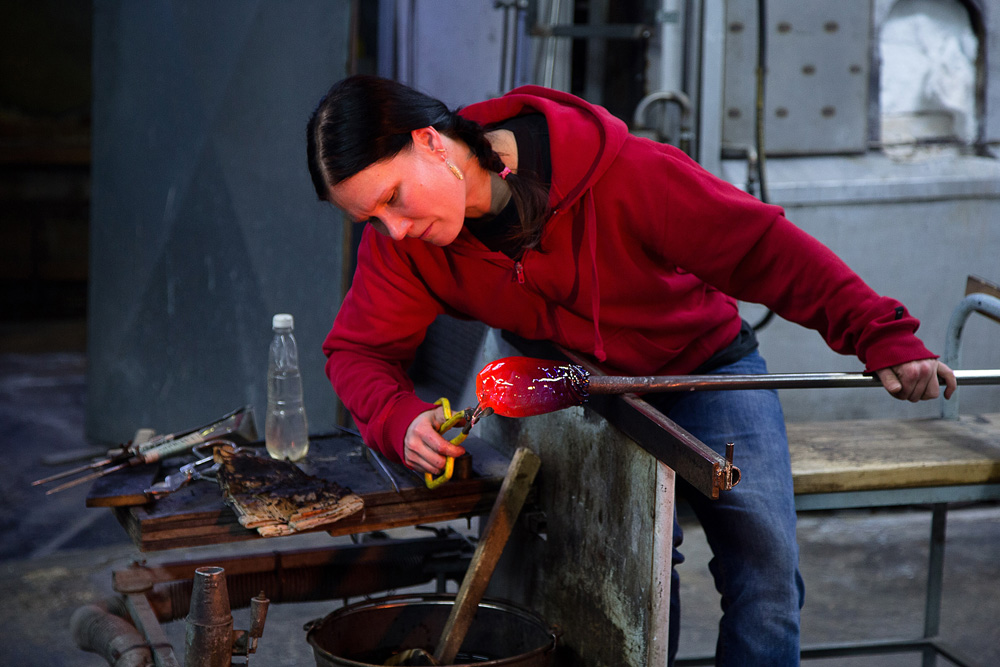
Hanna Maria Anttila
Viimeiset linnut (Last Birds)
Documentaire | 4k | couleur | 15:10 | Finlande | 2016
Nuutajärvi glass factory was closed after operating for 200 years. What happens to a small locality that loses its livelihood in the hands of globalization? Experimental documentary revolves around a young glassblower Kirsi Anttila and her family.
Hanna Maria Anttila (b. 1974, Savonlinna, Finland) is an artist and a producer based in Helsinki. She studied at the Academy of Fine Arts in Helsinki Finland and at the School of Visual Arts in New York. Anttila is interested in how societal changes become visible in everyday life and its details. Careful composition, clarity of form and precise punctuation are characteristic to her work. Hanna Maria Anttila works as the director of AV-arkki, the Distribution Centre for Finnish Media Art in addition to her artistic work.

Lorenzo Apolli
I compagni sconosciuti (The Unknown Companions)
Doc. expérimental | 16mm | noir et blanc | 12:5 | Italie | 2015
Beyond the white boundary of wired fences, birch trees and snow, men living in solitude as the world crumbles.
Lorenzo Apolli was born in a small city in the North of Italy, where he studied music and visual arts. After graduating in architecture he entered a documentary film-making institute, focussing on visions from the past and trying to explore the possible, mutual contributions among sound and image in the use of archival materials. He currently works as a researcher in a multidisciplinary documentation centre specialising in contemporary history, for which in the last few years he has been rediscovering archives of still and moving images.
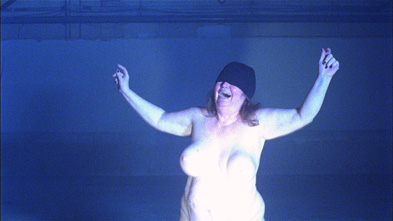
Josh Appignanesi, The film is by APPIGNANESI Josh, the song is by CREED Martin
DIE | A film by Josh APPIGNANESI / A song by Martin CREED
Vidéo | hdv | couleur | 3:0 | Royaume-Uni | 2012
DIE is a collaboration between Turner Prize winning artist Martin CREED who made the song "Die" and feature filmmaker Josh APPIGNANESI who created a response to the song. The film brings into play multiple notions of being exposed and yet remaining mysterious; rendered utterly naked under the spotlight with reference to torture imagery and Abu Ghraib, and yet withholding the mystery of the interior, with reference to papparazzi photos of celebrities holding up their hands. The result is strangely joyous. In terms of the ongoing collaboration between the artists, the piece crosses over between experimental film and music video and in so doing makes reference to Creed`s own previous video work in this vein, as well as to Appignanesi`s feature film work such as Song Of Songs (2005.)
Josh APPIGNANESI is a writer/director based in London. He directed the feature films The Infidel and Song Of Songs. Working across genres, he has also made short films, video art, music videos, documentaries, commercials and artworks, working with cast such as John Malkovich, Richard Schiff, David Tennant, Omid Djalili, and Tom Hiddleston. He teaches internationally. www.joshappignanesi.com Martin CREED is a renowned British artist and musician working internationally. He won the Turner Prize in 2001. www.martincreed.com

Yu Araki
HONEYMOON
Doc. expérimental | hdv | couleur | 29:40 | Japon | 2021
Set in a fictitious lunar base Nagasaki, HONEYMOON is the Japanese director Yu Araki’s take on Japonisme. He re-examines and re-interprets the wedding scene from Madame Butterfly (dir. Carmine Gallone, 1954), where B.F. Pinkerton sits in seiza (??), which is the Japanese term used for the proper, formal traditional way of sitting by kneeling on the floor and have legs folded underneath the thighs. Although seiza-style is widely known as “correct”, it didn’t permeate until after Japan opened up to the Occident, that is, after the culture of the “chair” had taken hold, hence the formality of what the Japanese thought had long history was only a modern, arbitrary construct. Inspired by this historical fact, Araki connects seiza with another element to contemplate the arbitrariness of humanity: constellation, which, incidentally, is a homonym with seiza (??) in the Japanese language. In addition, the aforementioned film Madame Butterfly has been known as one of the most iconic collaborations between Italy and Japan, with a strong intention from the Japanese production side to “correct” the twisted imagery of Japanese depiction in which they succeeded. However, Araki critically poses the question of what does it mean to understand another culture “correctly”. In Araki’s version, B.F. Pinkerton is replaced by a real-life photographer Adolf de Meyer (1868 - 1946), and the matchmaker with an anthropologist Frederick Starr (1858 - 1933), and having Suzuki and Dr. Tatsukichi Irisawa (1865 - 1938), who was known for his essay “On the Japanese Way of Sitting” (1921), joining in as broadcast commentator to describe the situation from a distance. The loose, gossipy dialogue between the off-site personnel ranges from fashion to spies, interweaving various elements while the performers patiently wait in perseverance until their legs fall asleep.
Yu Araki (b.1985, Yamagata City) received his Bachelor of Fine Arts in Sculpture from Washington University in St. Louis, U.S.A. in 2007, and completed his Master of Film and New Media Studies from Tokyo University of the Arts in 2010. In 2013, he was selected to participate in Tacita Dean Workshop hosted by Fundación Botín in Santander, Spain. During 2017-8, he was a guest resident at Asia Culture Center in Gwangju, South Korea, and Rijksakademie van beeldende kunsten in Amsterdam, the Netherlands. Recent exhibitions include Pola Museum of Art, Shiseido Gallery, the National Museum of Art, Osaka, MUJIN-TO Production; Fundació Joan Miró, Barcelona; Dallas Contemporary, Dallas; and Okayama Art Summit, Okayama. His films have been programmed in international festivals such as BFI London Film Festival, International Short Film Festival Oberhausen, Kassel Documentary Film and Video Festival, Rencontres Internationales Paris/Berlin, and International Film Festival Rotterdam, where he won the Ammodo Tiger Short Film Award in 2018. He was shortlisted as one of the 21 artists for the Future Generation Art Prize hosted by the Victor Pinchuk Foundation in Kyiv, Ukraine in 2019. He currently lives and works in Tokyo, Japan.
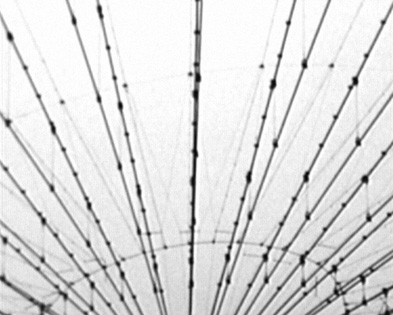
Salvatore Arancio
Untitled (Pavilion)
Film expérimental | 16mm | noir et blanc | 2:56 | Italie, Royaume-Uni | 2009
The film focuses on the New York's State Pavilion, an iconic building and one of the few surviving structures of the New York World`s Fair, held in Flashing Meadows in 1964. In Arancio's timeless abstract film, the camera slowly panning from the ground to the top end of the building, presents us a subjective reading of its architectural elements. Shot on Super 8 in one take, the film aims to juxtapose the construction's original utopian visionary aesthetics with Arancio's interest in apocalyptic representation and fascination for transient beauty.
Salvatore Arancio was born in Catania, Italy in 1974. He lives and works in London. He studied Photography at the Royal College of Art. His most recent exhibitions include: An Arrangement of the Materials Ejected, Spacex, UK, 2011; To See an Object to See a Light, Fondazione Sandretto Re Rebaudengo, Guarene d?Alba, Italy, 2011; Shasta, Federica Schiavo Gallery, Rome; ?Sentinel - PPS//Meetings#4?, Palazzo Riso - Museo d`Arte Contemporanea della Sicilia, Palermo, 2011; ?SI-Sindrome Italiana?, Le Magasin - Centre National d?Art contemporain de Grenoble, France, 2010; ?Catastrophe? Quelle Catastrophe!? Manif d?Art 5, The Quebec City Biennial, Engramme, Quebec City, Canada, 2010; ?An Account of the Composition of the Earth?s Crust: Dirt Cones and Lava Bombs?, Frame, Frieze Art Fair, London, UK, 2010; Prague Biennale 4, Karlin Hall, Prague, Czech Republic, 2009; ?I giovani che visitano le nostre rovine non vi vedono che uno stile?, GAM-Galleria d?Arte Moderna, Turin, 2009. Arancio was the recipient of the Art Omi Residency (New York) and a grant from The Elephant Trust (London) in 2011, and of the ?New York? Prize in 2009. He was selected for the Bloomberg New Contemporaries in 2006.

Salvatore Arancio
Birds
Film expérimental | super8 | couleur | 6:31 | Italie, Royaume-Uni | 2012
The film shot on Super 8 was filmed at the Zoology museum in Bologna. The museum was founded in 1860 part of the University of Bologna and is the largest and most significant in Italy. Rows and rows of cabinets filled with strangely shaped animals. It traces its roots all the way back to the very first cabinet of curiosity and the collection of Ulisse Aldrovandi, who allegedly coined the word Geology and is undisputedly one of the fathers of natural history. The film follows Arancio?s fascination with the human? s preoccupation to bring order to the world around us and the aesthetics related to the systems of classification used for this purpose. With this work the artist presents us with a subjective vision of the ornithological collection created by Zafagnini-Bertocchi in the first half of the 20th Century. Through the juxtaposition of deep gravitational rumbling sounds by LA cosmic cult music project Expo 70 and Arancio? s precise editing, still close ups and slow camera panning, the film exposes the sinister and uncanny nature of the displays, resulting in an ambiguous temporality, a visionary experience that transcends and transforms the original scientific illustrative purpose of the cabinets.
Born in Catania, Italy in 1974. Lives and works in London. He received his MA in Photography from the Royal College of Art. His artistic signature is photo-etching, but he works across a range of media such as sculpture, collage, animation and video. Arancio?s main interest lies in the potential of images. Departing from their literal meaning, he creates new juxtapositions that are both beautifully evocative and deeply disquieting. He looks to nature and science for his sources of inspiration, while unsettling any hint of the sublime by re-framing the images and the viewer?s experience. His constructed landscapes contain a sense of both the familiar and the unknown that enhances their symbolic readings and implications. Selected exhibitions: PROJECT: Salvatore Arancio, Rachel Cattle & Steve Richards, James Pyman, Maureen Paley Gallery, London, UK, 2013; PROJECT 03: Data, Contemporary Art Society, London, UK, 2013 (group show); Le Ragioni della Pittura. Esisti e prospettive di un medium, Palazzo de Sanctis, Castelbasso (Teramo), Italy, 2013 (group show); Curiosity. Art & the Pleasure of Knowing (Hayward Touring), Turner Contemporary, Margate, UK, 2013, touring to Norwich Castle Museum & Art Gallery, Norwich, UK, Royal Hibernian Academy, Dublin, Ireland, de Appel, Amsterdam, The Netherlands (group show); Cyclorama, Museo Tamayo Arte Contemporáneo, Mexico DF, Mexico (group show), 2013; Alternating Layers of Contrasting Resistance, Rowing Gallery, London, UK; The Little Man of the Forest With the Big Hat, Federica Schiavo Gallery, Rome, Italy; Relatively Absolute, Wysing Arts Centre, Cambridge, UK; Solo Presentation, Art Rotterdam 2013-New Art Section, Rotterdam, The Netherlands; The Little Man of the Forest With the Big Hat, MCZ-Museo Carlo Zauli, Faenza, Italy, 2012; An Arrangement of the Materials Ejected, Spacex, Exeter, UK, 2011; To See an Object to See a Light, Fondazione Sandretto Re Rebaudengo, Guarene d?Alba, Italy, 2011; Shasta, Federica Schiavo Gallery, Roma, 2011; Sentinel - PPS//Meetings#4, Palazzo Riso - Museo d?Arte Contemporanea della Sicilia, Palermo, Italy, 2011; SI-Sindrome Italiana, Le Magasin - Centre National d?Art contemporain de Grenoble, France, 2010; An Account of the Composition of the Earth?s Crust: Dirt Cones and Lava Bombs, Frame, Frieze Art Fair, London, UK, 2010; Catastrophe? Quelle Catastrophe!, Manif d?Art 5, The Quebec City Biennial, Engramme, Quebec City, Canada, 2010; Prague Biennale 4, Karlin Hall, Prague, Czech Republic, 2009; I giovani che visitano le nostre rovine non vi vedono che uno stile, GAM-Galleria d?Arte Moderna, Turin, Italy, 2009. Arancio was selected fot the Résidences Internationales aux Recollets, Paris, France, 2013; Sundaymorning@ekwc, European Ceramic WorkCentre, SG ?s-Hertogenbosch, The Netherlands; Wysing Arts Center Artist Residency, Cambridge, UK and Artist Residency and Ceramic Workshop, Museo Carlo Zauli, Faenza in 2012. He won The Elephant Trust Grant, London and The Art Omi Residency, New York in 2011, the Premio ?New York? in 2009 and was selected for the Bloomberg New Contemporaries in 2006.
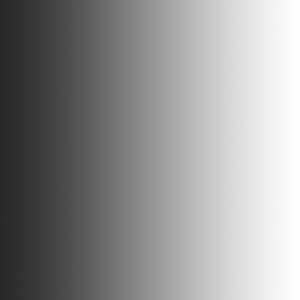
Mauricio Arango
EVERYTHING NEAR BECOMES FAR
Fiction | hdcam | | 11:0 | Colombie | 2012
Everything Near Becomes Far follows a day in the life of a couple living in a cabin nestled deep within the Andes mountain range in Colombia. They begin their day as usual, but something seems strange to the woman. A fearsome group of men awaits them. An atmosphere of dread develops gradually through the sounds and silences, a looming landscape and the threatening visions of wild animals observing the main characters from the distance. The film`s title is inspired by an observation the poet Borgues made on Goethe: ?Alles Nähe werde fern, everything near becomes far. Goethe was referring to the evening twilight. Everything near becomes far. It is true. At nightfall, the closest to us seems to move away from our eyes. So the visible world has moved away from my eye, perhaps forever. Goethe could be referring not only to twilight but to life. All things go off, leaving us. Old age is probably the supreme solitude -except that the supreme solitude is death?.?
Mauricio Arango was born in Colombia and lives and works in New York. He is an alumnus of the Independent Study Program at the Whitney Museum (New York, 2007), was a resident at the International Academy of Fine Arts in Salzburg (2005), Austria and earned an MFA from the University of Minnesota (2003). He is a fellow at the MacDowell Artist Colony, USA. His films and works have been shown in multiple festivals and screened in more than twenty countries including New Directors/New Films at the Lincoln Film Society and The Museum of Modern Art in New York, Kino Der Kunst in Münich, VideoBrasil in Sao Paulo, IndieLisboa in Portugal. He has received support from the Foundation for Contemporary Art, New York; Rooftop Films, New York; and The Bush Foundation for the Arts, USA, among others.
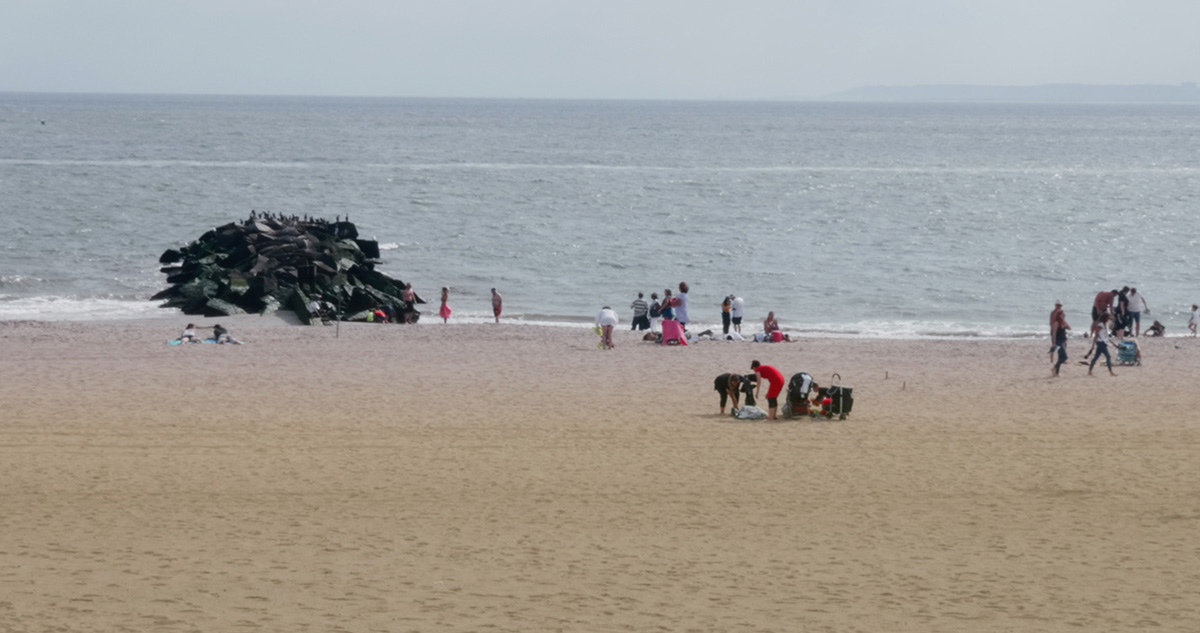
Mauricio Arango
Seafarer
Film expérimental | mov | couleur | 26:0 | Colombie, USA | 2020
"Seafarer" est un film narratif expérimental. Il combine un style d’essai, le field recording, des fragments d'études visuelles, des expériences avec des acteurs et une réflexion romancée sur la production artistique ancrée dans l'expérience personnelle. Un unique monologue accompagne des prises de vue, longues pour la plupart, illustrant des moments quotidiens filmés dans la ville de New York: un coucher de soleil sur le fleuve Hudson, des gens à la plage, un film projeté dans une salle de cinéma, des golfeurs sur un parcours de Chelsea Piers, etc. Les images du montage sont reliées par une voix off répétitive et à la première personne, interprétée par la chanteuse Little Annie, originaire de Miami, qui incarne le personnage d'une réalisatrice anonyme. Ses paroles obsédantes, prononcées avec humour et sérieux, offrent une méditation sur les failles de sa vie d'artiste. Elles abordent une multitude de sujets, dont notre relation ambiguë avec le capital, la relation complexe entre les acteurs et les réalisateurs, l'expérience d'être dans un cinéma, et les périodes où les nouvelles idées se font rares. "Seafarer" met en évidence les tensions entre l'observateur et le créateur, entre ce qui est scénarisé et ce qui est capté par hasard.
Mauricio Arango est né à Bogotá, en Colombie, et vit et travaille à New York (USA). Il est ancien élève de l'Independent Study Program du Whitney Museum of American Art, New York (USA), et a participé à des résidences au Headlands Art Center for the Arts, San Francisco (USA); à la MacDowell Artist Colony, Peterberough (USA) et au Museo El Barrio, New York (USA). Il a obtenu un MFA à l'université du Minnesota, Minneapolis (USA). Ses films ont été projetés dans des festivals d'art et de cinéma, notamment au New Directors/New Films at the Lincoln Film Society, New-York (USA); au Museum of Modern Art, New York (USA); à Kino Der Kunst, Munich (Allemagne); à VideoBrasil, São Paulo (Brésil); au FIDMarseille (France); aux Rencontres Internationales Paris/Berlin (France/Allemagne); et à IndieLisboa, Lisbonne (Portugal). Il a reçu des prix sous la forme de soutien financier de la part d'institutions telles que la Foundation For Contemporary Art, New York (USA); RivieraLab Coproduction Fund, Playa del Carmen (Mexique); Secretary of Culture, Bogota (Colombie); Filmmakers Fund, Rooftop Films, New York (USA); Matt Robert Arts, Londres (Royaume-Uni); Bush Foundation For the Arts, Saint Paul (USA); la Jerome Foundation, New York (USA); le National Fund for the Arts de la National Association of Latino Artists and Communities, San Antonio (USA); et The Minnesota State Arts Board, Minneapolis (USA), entre autres.
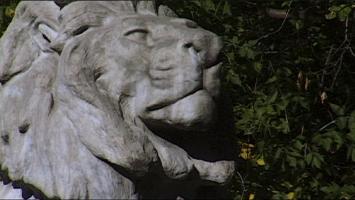

Vasco Araujo
Augusta
Art vidéo | dv | couleur | 8:55 | Portugal | 2008
La vidéo « Augusta » reflète les abus de pouvoir et les idéologies politiques dans le monde, par le biais d'une conversation entre deux lions en pierre, qui discutent d?un nouvel endroit où vivre.
Vasco Araújo est né en 1975 à Lisbonne, où il vit et travaille aujourd?hui. Il a obtenu sa licence de sculpture en 1999 à la FBAUL (École des Beaux-arts de Université de Lisbonne), et a participé ensuite à des cours de perfectionnement en arts visuels au Maumaus de Lisbonne de 1999 à 2000. Il a par la suite participé à plusieurs expositions individuelles et collectives tant au Portugal qu?à l'étranger. Il également été en résidence dans plusieurs institutions et programmes, notamment à l'Université des Arts de Philadelphie (USA) en 2007, aux Récollets à Paris en 2005, et au Core Program de Houston en 2003/2004. En 2003, il a reçu le Prix de l'EDP pour les Jeunes Artistes.


Vasco Araujo
Hereditas
Vidéo expérimentale | dv | couleur | 12:0 | Portugal | 2006
Hereditas, this piece confronts us with a paradox. The action is intriguing, and the location suggests something strange, yet magical. A child comes out of the forest?s depths and, with guileless steps, leads us into a dilapidated sanatorium?s long, empty corridors, in a timeless, lonely, sometimes spectral itinerary. The paradox lies in the simple, straightforward way the mountain?s findings are handled. It represents an encounter with something essential, thought hidden, and which may reveal itself with a surprising cruelty, harsher than death itself. Hereditas it is a work on childhood, loneliness, pain, love, death and the desire for knowing and understanding the great enigmas and interrogations of our human, all too human condition.
Vasco Araújo was born in 1975 in Lisbon, the city where he continues to live and work. He completed his first degree in Sculpture in 1999 at FBAUL (Lisbon University School of Fine Art), and attended the Advanced Course in Visual Arts at Maumaus in Lisbon, from 1999 to 2000. Since then, he has participated in various solo and group exhibitions both in Portugal and abroad, also taking part in residency programmes, such as The University of Arts, Philadelphia (2007); Récollets, Paris (2005); and the Core Program (2003/04), Houston. In 2003, he was awarded the EDP Prize for New Artists. Selection of his solo exhibitions: About being Different (2007), BALTIC Centre for Contemporary Art, U.K.; Pathos (2006), Domus Artium 2002, Salamanca; Dilemma (2005), S.M.A.K., Ghent; L?inceste (2005), Museu do Azulejo, Lisbon; The Girl of the Golden West (2005), The Suburban, Chicago; Dilema (2004), Museu de Serralves, Porto; Sabine/Brunilde (2003), SNBA, Lisbon. Amongst his group exhibitions, the most important have been his participation in the ?Experience of Art?, La Biennale di Venezia. 51st International Exhibition of Art, Venice; ?Dialectics of Hope?, 1st Moscow Biennial of Contemporary Art, Moscow, (both in 2005); Solo (For Two Voices), CCS, Bard College (2002), New York; ?The World Maybe Fantastic? Sydney Biennial (2002), Sydney; Trans Sexual Express, Barcelona (2001), a Classic for the Third Millennium (2001), Centre d?Art Santa Mònica, Barcelona. His work has been published in various books and catalogues and is represented in several public and private collections, such as at the Centre Pompidou, Musée d?Art Moderne (France); Fundação Calouste Gulbenkian (Portugal); Fundación Centro Ordóñez-Falcón de Fotografía ? COFF (Spain); Museo Nacional Reina Sofia, Centro de Arte (Spain); Fundação de Serralves (Portugal); Museum of Fine Arts, Houston (USA).
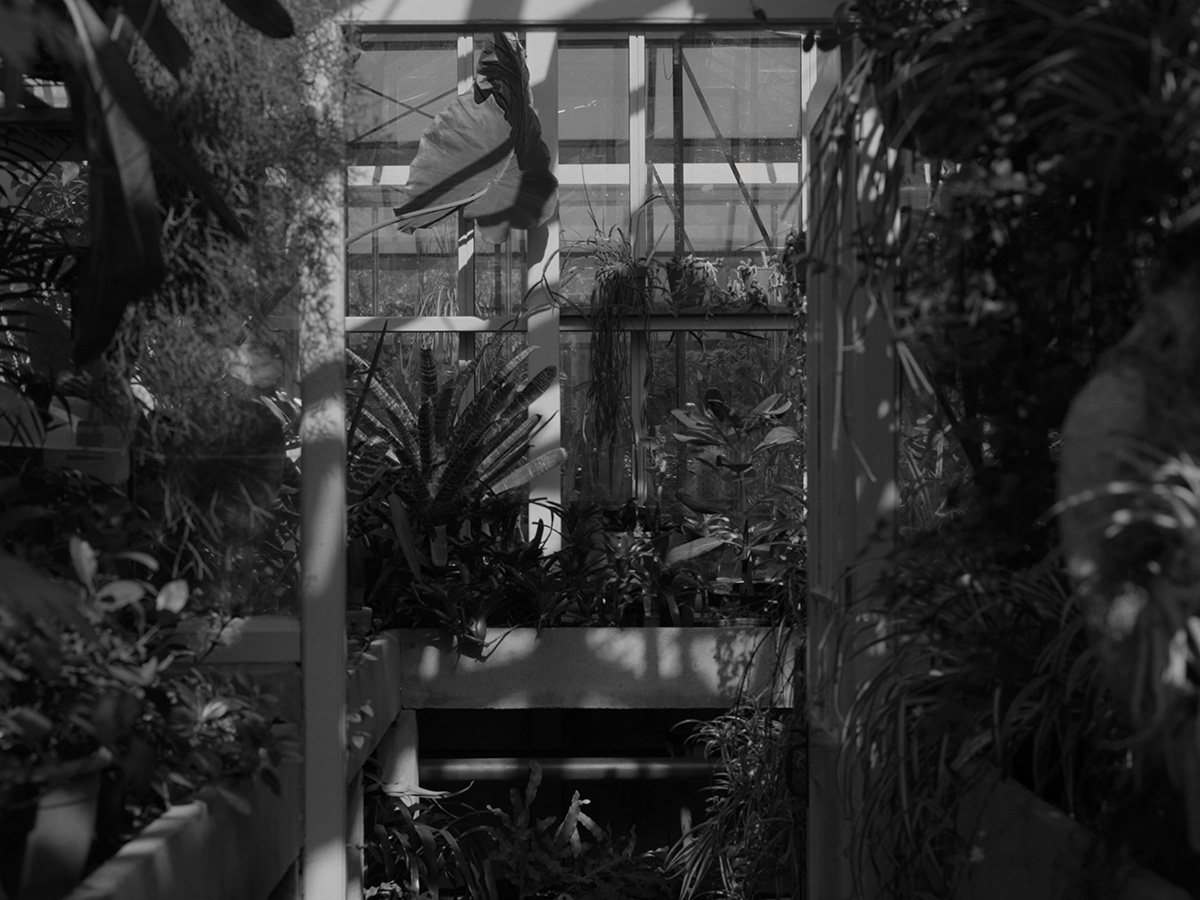

Sol Archer
On a bare rock by the ocean you will never hear anything but birds whose cries blend with the sound of winds
Film expérimental | 4k | noir et blanc | 15:20 | Royaume-Uni, Pays-Bas | 2022
Brief Synopsis The tropical greenhouse is the pinnacle of the construction of nature as spectacle, a montage of discontinuous seasons, climates, and ecosystems, narrating ecological travelogues for the spectator passing through the hard cut of the glass door. Within, ‘nature’ is a collage inherited from the colonial period, an image practice, emergent contemporaneously with the nascent technologies of photography, and ultimately the bricolage strategy of cinema, and calling for specific relations of care and ecology building. In this film volunteers at a colonial era greenhouse in a small Dutch village collaborate to produce a sonic environment, soundtracking their maintenance labour with vocal re-creations of animal and bird calls, transcribed in the 1820s as western musical notation by Hercule Florence, the Brazilian ‘isolate inventor of photography’. Detailed synopsis This film is a work on the construction of ‘nature’ as image practice, emergent in the colonial period contemporaneously with the nascent technologies of photography, recording, and ultimately the bricolage strategy of cinema. Volunteers at a colonial era greenhouse in a small Dutch village soundtrack their labour maintaining a tropical spectacle with vocal re-creations of animal calls, transcribed in the 1820s in Brazil by Hercule Florence, the Brazilian ‘isolate inventor of photography’, whose writings pre-sage the spectacle and compression of space and time of cinematic form. The tropical greenhouse is the pinnacle of the construction of nature as spectacle, a montage of discontinuous seasons, climates, and ecosystems, narrating ecological travelogues for the spectator passing through the hard cut of the glass door. Within, ‘nature’ is a collage inherited from the colonial period, that has left us with composite ecologies, gardens, parks, and farms, montages of ecosystems and climates forming relations according to aesthetic, cultural, and commercial values and calling for specific relations of care. In the 1820s, while on the Langsdorff expedition into the interior of Brazil, Florence, employed to illustrate scientific and anthropological encounters, developed a new method for transcribing animal calls as European style musical notation. His fragments of sound were sent to the scientific institutes of the Metropole, but, the expedition ending in sickness, unrecognised. In the mid-1800s, with printing outlawed in Brazil, Florence developed a photographic process, and a rudimentary camera 15 years before Daguerre, with the aim of reproducing and publishing his work. Bound together in his writing, and in his sound and image practice ‘nature’ emerges in the 1830s as construct, as an image making spectacle, a quasi-cinematic re-assemblage of isolated elements into a sensory, and, above all aesthetic framework. “Gardens, like dreams, would seem to lose their innocence in analysis. However, dreams, like gardens, were never disconnected from the every day damage, responsibilities, and contaminations of the seemingly more “real” spaces of our lives. The dried plant specimen bound in the monograph with coloured plants may lead us from botany to rivalry and the problems of power and desire, but, in that path, the dream of the botanical monograph also shows us that the transports of pants and passionate attachments to flora hold in their train an inescapable history of the effects of imperium. Though we are implicated in the history of the dream of the botanical monograph, we cannot just disavow the botanical, claiming that it has no place, especially if we are to have a place at all in this global environment not necessarily of our own making. The problem then becomes how to re landscape the overdetermined “garden” we may most want to displace.” Jill H. Casid, Sowing Empore, Landscape and Colonisation.
Sol Archer (1983) is a Netherlands based artist working through collaboration with professional and non-professional groups, considering the encounter as a space of production. Frequently working with video, Sol is focussed on ways individuals and communities constitute themselves through their association with collective cultural activity, and how identities and histories entwine through the performance of cultural attachment. This extends into a pedagogical practice on structures and systematising group environments focussed on self reflexive film-making practices and the legacy of collaborative film practice. Sols work has been exhibited widely, including in the Sydney Biennial, Sydney, AU; Rozenstraat, Amsterdam, Golden Thread, Belfast, Northern Ireland, NL; Le Crac19, Montbeliard, FR; Index Foundation, Stockholm, SE; TULCA, Galway, IR; Le Lieu Unique, Nantes, FR; MuKHA, Antwerp, BE; and more.